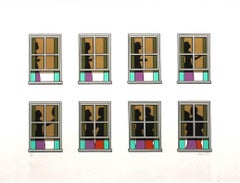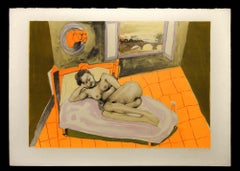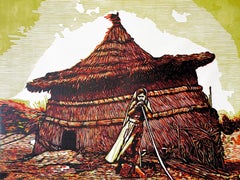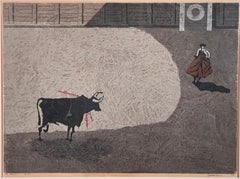Horizontal Figurative Prints
1970s Contemporary Figurative Prints
Screen
21st Century and Contemporary Pop Art Figurative Prints
Lithograph
1980s Contemporary Figurative Prints
Lithograph
1910s Modern Landscape Prints
Drypoint
21st Century and Contemporary Old Masters Figurative Prints
Canvas, Linen, Ink, Linocut
1960s Figurative Prints
Woodcut
1960s Pop Art Figurative Prints
Lithograph
1960s Abstract Expressionist Abstract Prints
Lithograph
Early 20th Century Post-Impressionist Portrait Prints
Handmade Paper, Rag Paper, Drypoint, Etching
1930s Figurative Prints
Etching, Aquatint
1920s Modern Figurative Prints
Lithograph
2010s Contemporary Figurative Prints
Permanent Marker, Lithograph, Offset
Late 20th Century Impressionist Figurative Prints
Lithograph
21st Century and Contemporary Contemporary Figurative Prints
Digital Pigment
1970s Contemporary Abstract Prints
Paper, Etching, Aquatint
Early 2000s Pop Art Figurative Prints
Lithograph
1980s Impressionist Portrait Prints
Paper, Screen
2010s Figurative Prints
Giclée, Archival Paper
1940s Post-Impressionist Figurative Prints
Woodcut
1920s Expressionist Figurative Prints
Woodcut
2010s Contemporary Figurative Prints
Archival Pigment
1970s Pop Art Prints and Multiples
Lithograph, Offset
1970s Modern Abstract Prints
Color, Lithograph
Early 2000s Expressionist Figurative Prints
Canvas, Giclée
1980s Street Art Figurative Prints
Screen
1960s Pop Art Figurative Prints
Lithograph
Early 1900s Figurative Prints
Drypoint, Aquatint
1880s Figurative Prints
Drypoint, Etching
Early 19th Century Victorian Figurative Prints
Etching, Watercolor
1840s Edo Figurative Prints
Mulberry Paper, Woodcut
1990s Impressionist Portrait Prints
Paper, Screen
1890s Victorian Figurative Prints
Lithograph
Early 20th Century French School Interior Prints
Handmade Paper, Etching
1930s Art Nouveau Figurative Prints
Drypoint, Etching
21st Century and Contemporary Contemporary Black and White Photography
Archival Paper, Digital
1930s American Modern Figurative Prints
Lithograph
1970s Surrealist Figurative Prints
Color, Drypoint
2010s Pop Art Figurative Prints
Color, Archival Pigment
20th Century Modern Figurative Prints
Lithograph
2010s Contemporary Figurative Prints
Paper, Digital
1890s Jugendstil Figurative Prints
Drypoint
21st Century and Contemporary Contemporary Abstract Prints
Plexiglass, Digital
1990s Pop Art Abstract Prints
Lithograph
1980s Folk Art Animal Prints
Screen
1930s American Modern Figurative Prints
Lithograph
1930s American Modern Landscape Prints
Lithograph
1950s Cubist Figurative Prints
Lithograph
1970s Surrealist Figurative Prints
Lithograph
1910s Expressionist Figurative Prints
Woodcut
Late 20th Century Modern Landscape Prints
Lithograph
1930s Modern Figurative Prints
Etching, Aquatint
1770s Academic Figurative Prints
Etching, Paper, Ink
1960s Modern Figurative Prints
Lithograph
1950s Post-Impressionist Figurative Prints
Crayon, Paper, Linocut
Mid-20th Century Figurative Prints
Etching
Mid-19th Century French School Landscape Prints
Watercolor, Handmade Paper, Engraving
1970s Contemporary Figurative Prints
Lithograph
1920s Figurative Prints
Etching
Early 20th Century American Modern Landscape Prints
Laid Paper, Etching
Mid-20th Century Modern Figurative Prints
Stencil



